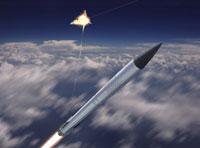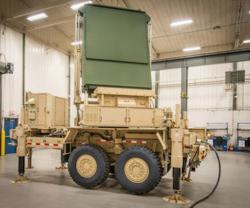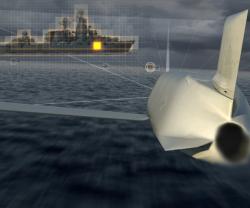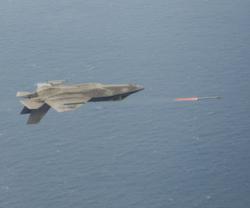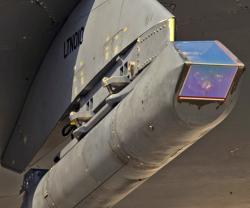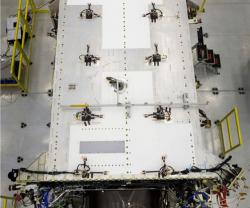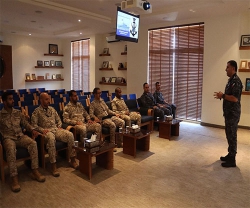LM PAC-3 Missile Intercepts Cruise Missile Target
30.04.2012 Asia
Lockheed Martin’s PAC-3 Missile successfully intercepted and destroyed a cruise missile target last Thursday at the Utah Test and Training Range in an unprecedented interoperability demonstration utilizing the Joint Land Attack Cruise Missile Defense Elevated Netted Sensor (JLENS) and the PATRIOT system.
The test demonstrated the PAC-3 Missile Segment’s unique ability to detect, track, engage and destroy a cruise missile target at extended range in an integrated air and missile defense architecture that joins netted sensors and missile defense systems to provide greater capability for the warfighter.
“The PAC-3 Missile continues to be successful against today’s modern threats, and is ready for tomorrow’s modern plug-and-fight air and missile defense architectures,” said Richard McDaniel, Vice President of PAC-3 programs at Lockheed Martin’s Missiles and Fire Control business.
“This effort moves us closer towards achieving the U.S. Army’s vision of a truly integrated Air and Missile Defense System,” he added.
Lockheed Martin achieved the first-ever hit-to-kill intercept in 1984 with the Homing Overlay Experiment, using force of impact alone to destroy a mock warhead outside of the Earth’s atmosphere. Further development and testing produced today’s PAC-3 Missile, which won a competition in 1993 to become the first hit-to-kill interceptor produced by the U.S. government. The PAC-3 Missile has been the technology pathfinder for today’s total conversion to kinetic energy interceptors for all modern missile defense systems.
The test demonstrated the PAC-3 Missile Segment’s unique ability to detect, track, engage and destroy a cruise missile target at extended range in an integrated air and missile defense architecture that joins netted sensors and missile defense systems to provide greater capability for the warfighter.
“The PAC-3 Missile continues to be successful against today’s modern threats, and is ready for tomorrow’s modern plug-and-fight air and missile defense architectures,” said Richard McDaniel, Vice President of PAC-3 programs at Lockheed Martin’s Missiles and Fire Control business.
“This effort moves us closer towards achieving the U.S. Army’s vision of a truly integrated Air and Missile Defense System,” he added.
Lockheed Martin achieved the first-ever hit-to-kill intercept in 1984 with the Homing Overlay Experiment, using force of impact alone to destroy a mock warhead outside of the Earth’s atmosphere. Further development and testing produced today’s PAC-3 Missile, which won a competition in 1993 to become the first hit-to-kill interceptor produced by the U.S. government. The PAC-3 Missile has been the technology pathfinder for today’s total conversion to kinetic energy interceptors for all modern missile defense systems.
Previous PostRheinmetall Wins MASS Naval Countermeasures Order
Latest news
Latest events
IDEF 2025 Turkey - International Defence Industry Fair
22 - 27 Jul 2025Istanbul Expo Center - TurkeyDSEI 2025
09 - 12 Sep 2025Excel, London - United KingdomIntersec Saudi Arabia
29 Sep - 01 Oct 2025Riyadh International Exhibition & Convention Centre - Saudi ArabiaDubai International Air Chiefs’ Conference (DIACC 2025)
16 Nov 2025Atlantis, The Palm Dubai - United Arab Emirates

